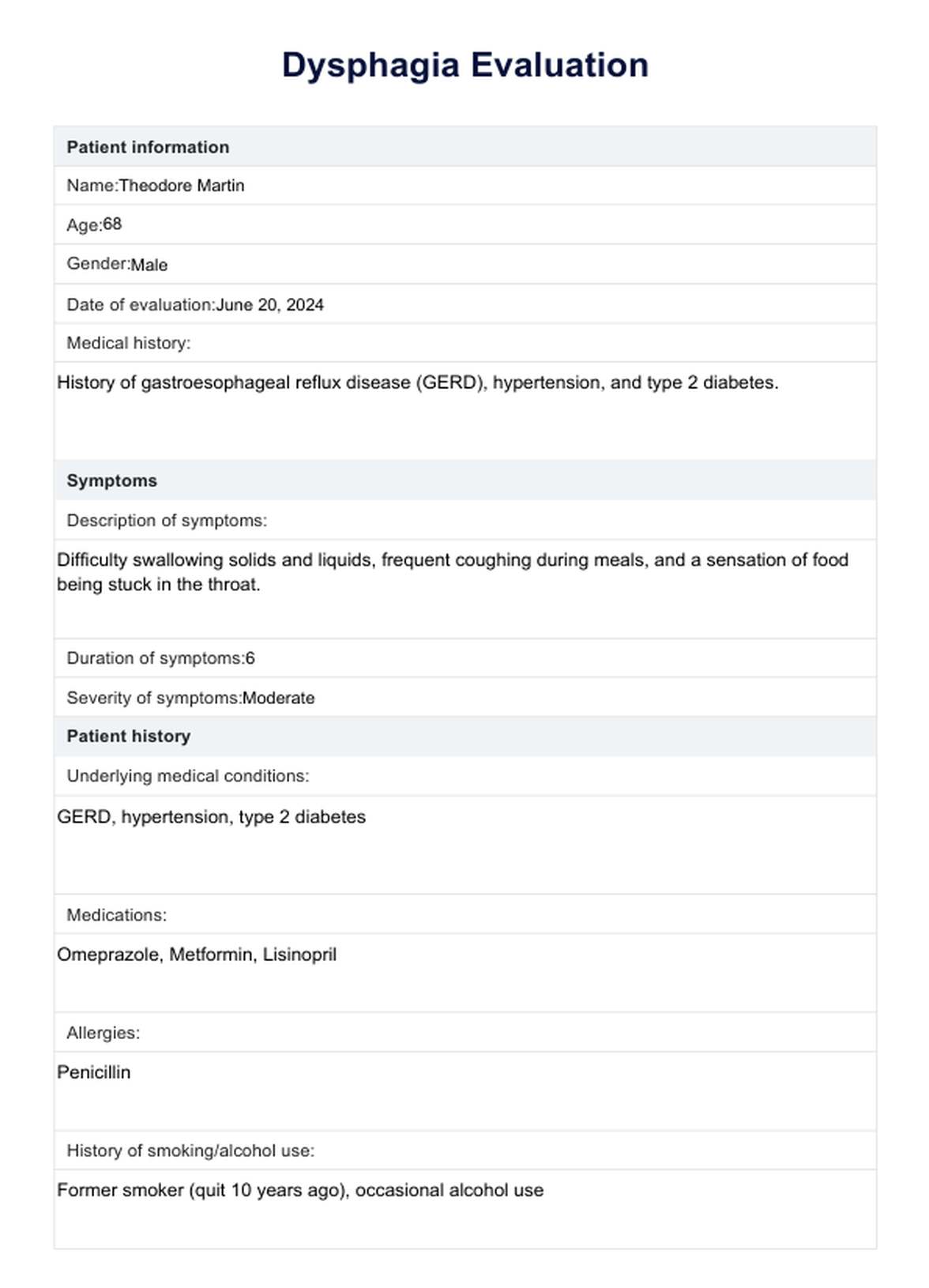Diagnostic tests for dysphagia may include a videofluoroscopic swallow study (VFSS), endoscopy, esophageal manometry, and pH monitoring to assess swallowing function, identify structural abnormalities, and evaluate esophageal motility and acid reflux.

Dysphagia Evaluation
Learn about the importance of Dysphagia Evaluation and gain insights through Carepatron's free PDF download. Explore examples and tips for assessing swallowing difficulties.
Dysphagia Evaluation Template
Commonly asked questions
The goal of dysphagia evaluation is to identify the underlying cause of swallowing difficulties, assess the severity of the condition, and develop an appropriate treatment plan to improve swallowing function and prevent complications.
The approach to diagnosing dysphagia involves a combination of patient history, physical examination, and diagnostic tests to evaluate swallowing function, identify potential causes, and guide treatment decisions based on the patient's specific needs.
EHR and practice management software
Get started for free
*No credit card required
Free
$0/usd
Unlimited clients
Telehealth
1GB of storage
Client portal text
Automated billing and online payments











